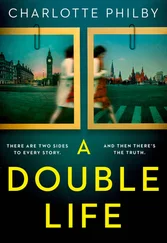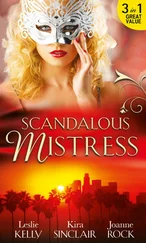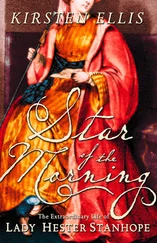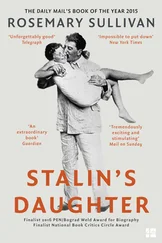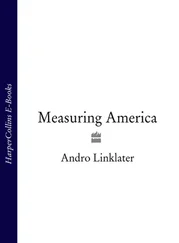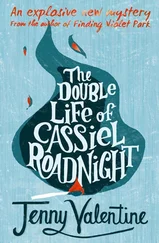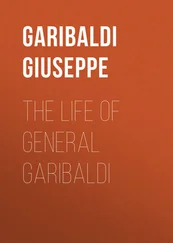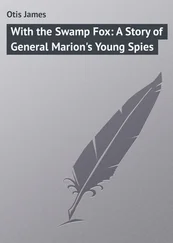“The [regular] Troops were instantly formed to Receive them,” William Darke of the First Regiment reported to Washington, “and the pannack Struck [ sic ] Militia Soon broke in to the Center of our incampment; in a few Minutes our Guards were drove in and our whole Camp Surrounded by Savages advancing up there to our Lines, and Made, from behind trees Logs etc., Grate Havok with our Men.” Courageously Darke rallied his troops and with two charges drove off the Indians in front, but behind them others got into the camp and scalped its defenders. Then confusion took over, and in Darke’s words “the whole Army Ran together like a mob at a fair, and had it not been for the Gratest Exertions of the officers would have Stood there til all killed.”
Small groups formed up and with bayonets fixed kept the enemy at bay. But as Major Ebenezer Denny noted in his journal, “[The Indians] could skip out of reach of bayonet and return, as they pleased. The ground was literally covered with the dead . . . It appeared as if the officers had been singled out, as a very great proportion fell.” Surrounded on all sides, the resistance grew weaker until St. Clair ordered a retreat to Fort Jefferson that might have become a massacre had Little Turtle’s army not been distracted by the huge booty of arms, artillery, and equipment they had captured. Everything was abandoned, including more than a hundred wives and children, nearly half of whom were slaughtered.
Almost six hundred of the fourteen hundred soldiers in St. Clair’s force were killed, including his second-in- command, Brigadier General Richard Butler, and thirty-seven other officers, while wounds accounted for as many more. It was the bloodiest defeat Native Americans ever inflicted on the U.S. army. The shock felt throughout the nation was epitomized by the reaction of the president when he read St. Clair’s dispatch with the news. Having waited until the room was cleared of strangers, Washington burst out to his secretary Tobias Lear, “To suffer that army to be cut to pieces— hacked, butchered, tomahawked— by a surprise—the very thing I guarded him [St. Clair] against! O God, O God, he’s worse than a murderer! How can he answer for it to his country! The blood of the slain is upon him— the curse of widows and orphans— the curse of Heaven!”
Yet amid the chaos and terror, the resistance of the trained soldiers, who had withstood the initial onslaught and held their ground for some hours, stood out. When the national horror had subsided, it left a clear determination to create a professional army that would be large enough to inflict decisive military defeat on the Indians. In December 1791, Henry Knox, Washington’s secretary of war, proposed that its strength should be 5,120 men, the same number as that of a Roman legion. Three months later, in March 1792, Congress conquered its doubts about professional soldiers and not only voted the necessary funds but left it to Washington to determine the exact composition of the new army that was soon to be termed the Legion of the United States. He was also to appoint its commander.
COLONEL JAMES WILKINSON assumed that position would fall to him. Early in December 1791, he wrote to Miró, primarily to explain why he had joined the army—“my private interest, the Duty which I owe to the Country I live in, & the aggrandizement of my family”— but he predicted that with the death of General Butler and expected dismissal of General St. Clair, “it is most probable that I shall be promoted [to] the chief command.”
To underline his credentials, he embarked on a whirlwind campaign designed to display his energy and unswerving adherence to the virtues of discipline and obedience. In January 1792, he arrived at the army’s western headquarters, Fort Washington. This massive defensive post, two stories high with a blockhouse at each corner, was, according to Harmar’s report, “one of the most solid substantial wooden fortresses . . . of any in the Western Territory.” It was home to almost three hundred soldiers, roughly the same number as the inhabitants of Cincinnati.
Pausing only to organize a covering party of militia cavalry, Wilkinson led out a column of 150 men on January 24, “whilst the snow is on the ground,” as he informed Knox, to follow the route taken by General St. Clair’s army. He resupplied the defenses at Forts Hamilton and Jefferson, the first two links in a chain of forts that would eventually stretch north from the Ohio. From Hamilton he sent an urgent message back to Samuel Hodgdon, in charge of supplies at headquarters, demanding that a depot be established at Fort Jefferson. “The depth of the snow and the hardness of the Roads makes [ sic ] it almost impossible for the Corn to be got on,” he admitted, “but it is an object of such great Moment that no effort should be left untried. The moment the season breaks, you are to get the business done.”
At the scene of St. Clair’s defeat, they found, in the words of one officer, “upwards of six hundred bodies, horribly mangled with tomahawks and scalping knives and by wild beasts.” Although blackened by frost, the corpses had been preserved through the winter, and the scene was “too horrible for description.” While some men were detailed to dig pits for burial of the bodies, Wilkinson ordered others to scour the battlefield, where they recovered a cannon and several hundred muskets. On the way home, he set the men to building another fort, which he named St. Clair, midway between Hamilton and Jefferson, boasting that although put up in just six days, it was as “handsome, stronger & as extensive” as its neighbors. Early in March, he sent an order for “60 good felling axes, 2 cross-cut saw, 4 whipsaws” and two carpenters to help in the construction of the new fort. It was followed soon afterward by a demand for mattocks, shovels, spades, ropes, and chains.
When the exhausted column returned to Fort Washington at the end of the month, the colonel turned his unrelenting energy to the task of restoring discipline in the garrison. Despite St. Clair’s devastating defeat, and the scalping of an army blacksmith within sight of the wooden walls, the fort was laxly defended, and Wilkinson was appalled by the disorderly atmo-sphere and by the sight of brawling soldiers in the town.
“A drunken Garrison and a Guardhouse full of prisoners appears to be the result of a relaxation in [discipline],” he stormed in a general order following his inspection. “Any private, therefore, who may henceforward be discovered drunk beyond the Walls of the Garrison Shall receive fifty lashes on the spot where he may be detected.” To enforce his order, he instituted daily patrols to pick up defaulters and established a routine of drill and exercise culled from Steuben’s Blue Book “to check and restrain the licentious habits which have infested the troops.”
Deeply impressed, the garrison chaplain, the Reverend William Hurt, assured Washington, “General Wilkinson is the prominant character in this country, & is thought by many will have the Chief command in the next expedition, & I really believe he has abilities equal to it; & far superior to what his enemies, or even friends, are aware of.” From Philadelphia, Wilkinson received a letter of congratulations from Henry Knox. “The Zeal and promptitude with which you execute the wishes of the executive are noted with pleasure,” Knox wrote, “and will not fail of receiving the approbation of the President.”
ON MARCH 9, the president brought together his innermost cabinet of Thomas Jefferson, Alexander Hamilton, and Henry Knox to consider the candidates for command of the Legion. Washington ran through the qualities of each, and even in the official version of their discussions his verdicts sound uncompromising. Of the nine major generals from the Revolutionary War, most were ruled out by age, drink, or reluctance to serve. The fifth was Anthony Wayne. “More active & enterprizing than judicious & cautious,” Washington decided. “No oeconomist it is feared. Open to flattery—vain— easily imposed upon—and liable to be drawn into scrapes. Too indulgent (the effect perhaps of some of the causes just mentioned) to his Officers & men. Whether sober— or a little addicted to the bottle, I know not.”
Читать дальше



